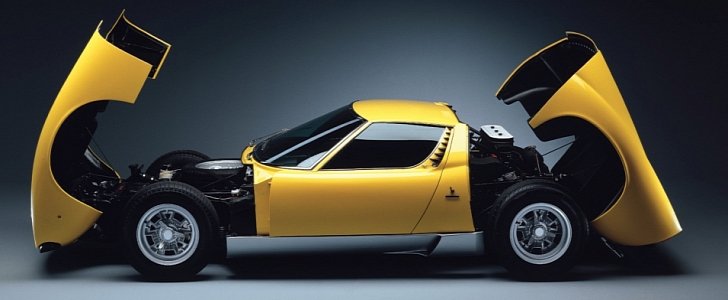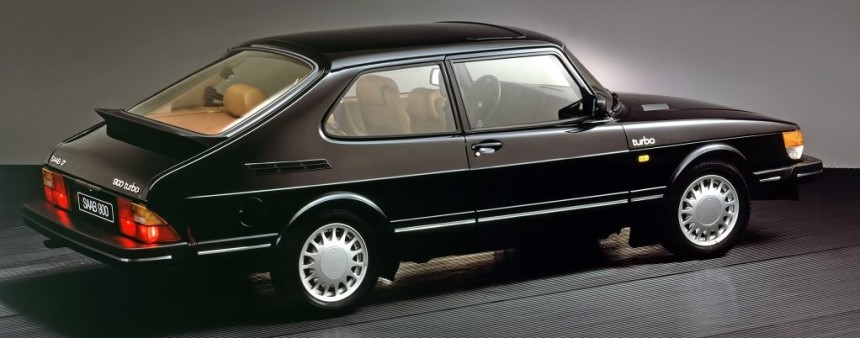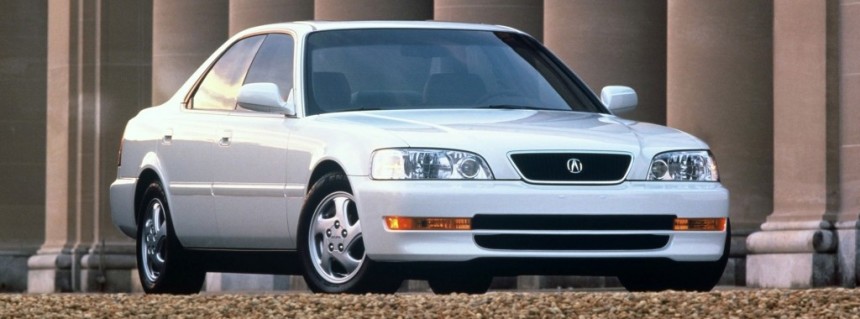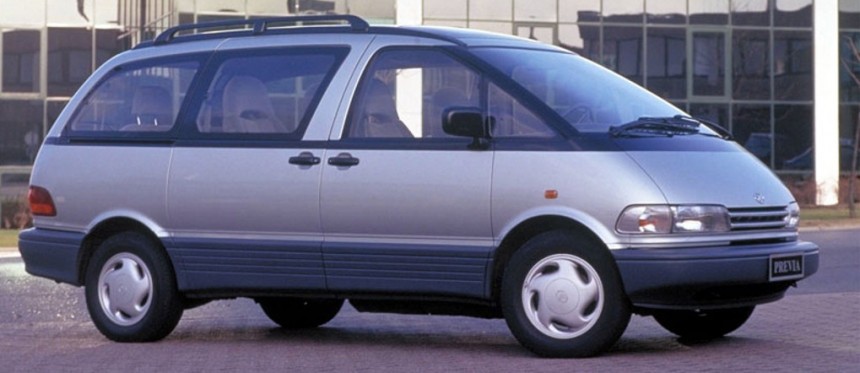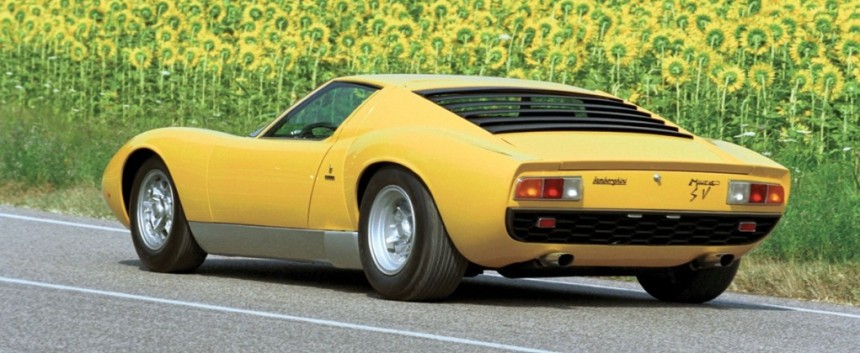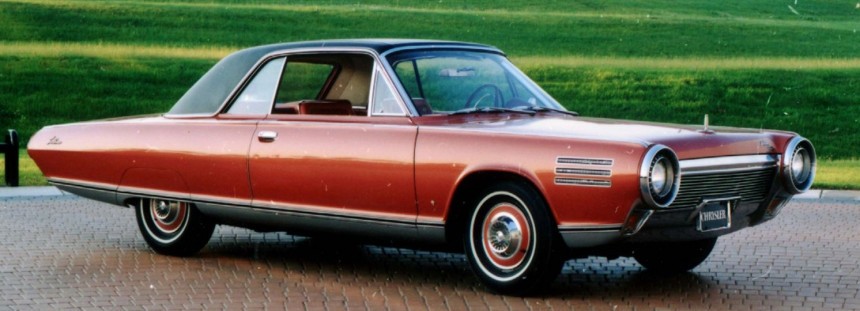Function follows form or form follows function? The answer to that inquiry used to vary, if the one who answered was a designer or an engineer in the automotive industry.
Even today, the debate is unsettled once and for all, but at least we found out that the egg came before the chicken. However, back in the day, engineers would have to squeeze an engine under a body that was too sleek for its own good. The flip side of that story involved designers that had to reshape a vehicle to fit an engine inside.
We decided to take a look at earlier designs that featured engines that were placed in unusual configurations.
Instead of the conventional transverse-mounted engine for front-wheel-drive applications, or its longitudinal-mounted equivalent, we review the oddball technical solutions that entered production many years ago and were never repeated by their creators.
Sometimes, when a company does not repeat a technical solution it introduced, it might mean that the right answer at that time was not right a few years down the line.
In most cases, it means that the design was not approved by the leaders of individual departments, which may happen for a multitude of reasons. We will let you guess why their makers never repeated these solutions below.
Saab 900 - first generation
Saab’s first generation 900 may appear to be a regular hatchback, right? Well, it is not, because it has a unique engine configuration: a 45-degree slanted inline-four cylinder engine that was longitudinally mounted.
That does not seem so crazy, right? It was, because the power plant is fitted “backwards,” in the sense that the crankshaft fed the primary gear of the transmission through the front of the vehicle.
The gearbox itself was a transaxle design that served as an oil pan for the engine, and it received the power plant’s might via a set of chain-driven gears. Mini was the best-known company to implement this, but Saab’s solution did not share the oil sump with the transmission.
Saab reportedly fitted this design to the 900 because it allowed installing a double wishbone front suspension to a front-wheel-drive car that is as narrow as this vehicle and has a low hood line.
While it was easier to service the clutch and change belts and other components, this powertrain option was not as reliable as expected, with the transmission being the weakest link in the chain.
Honda Vigor (third generation)/Acura TL - first generation
The third generation of the Honda Vigor and the first Acura TL received the only five-cylinder engine from the Japanese automaker in recent history. While the configuration was typical for Volvo or Audi around that time, the unit was uncommon for a Honda, and it was the only engine option for these two models.
So far, it is not unique, but what sets it apart is the fact that the unit is slanted to the side, and its transmission is attached to it. The unusual configuration does not end here, as its asymmetrically installed limited-slip differential uses half shafts to power the front wheels.
The arrangement is considered a mid-front powertrain, because the engine is slightly behind the front wheels, which ensures a better weight distribution between axles. The engine was discontinued in 1998, after the Acura TL was replaced with a new generation. Honda never used that setup again for any of its engines.
Toyota Previa - first generation
In the 1990s, Toyota launched a minivan with a mid-engine layout. It was called the Previa, and it featured rear-wheel-drive. A supercharged engine was also offered in the range. An all-wheel-drive version, called All-Trac, was available for later model years, and even in conjunction with the supercharged motor.
If that was not convincing enough for you, the engine was installed at a 75-degree angle, and its position was beneath the front seats. Toyota never returned to this configuration, but it is impressive to reminisce the engineering behind this model.
We must note that the Previa was the first minivan to offer a passenger airbag as standard, as well as the first van to pass all U.S. safety standards at the time of its introduction.
While it may seem weird to service a mid-engined minivan, Toyota’s engineering team made things surprisingly simple. The spark plugs could be changed by removing the passenger seat and an access panel. Meanwhile, all ancillary components were under the hood, as an accessory driveshaft drove them. Did we mention that it had a 50/50 front/rear weight distribution? That is more than impressive for a minivan.
Lamborghini Miura
This model needs no introduction here, as it is considered the pioneer of the mid-engined two-seat automobile class. Today, the configuration first used on the Miura is almost a standard for supercars and hypercars, but it was a novelty in its time. Three top engineers developed the prototype that led to the Miura, and it was all done in their spare time.
Lamborghini’s Miura employed a V12 engine that was transversely mounted. While others have fitted engines that way in the middle of a vehicle, Lamborghini’s engineers were first to do it on a road car. The reasoning was related to the limited space available, which was a problem that appeared because the engine was not measured to fit in the Bertone-styled prototype.
Lamborghini was inspired by the classic Mini with this layout, as the engine was formed with the gearbox in an integral casing, and they even shared lubrication until the P400SV model was introduced (with a standard LSD, which needed special oil that could not be mixed with regular engine oil). The clutch sat in a housing at one end of the engine block, to keep the package as compact as possible.
Chrysler Turbine Car
While the Lamborghini Miura is a vehicle that has reached an incredible resale value these days, there is a Chrysler model that is significantly more expensive than any Lamborghini on the market. Oddly enough, its body was made in Turin, Italy, which is the same country that gave us Ferrari, Maserati, and Lamborghini. Big thanks, by the way!
Chrysler’s Turbine Cars were experimental vehicles made in the 1960s, and they came with a gas turbine engine. The unit was claimed to be able to run on any flammable fluid (peanut oil and tequila included, FYI), which is an unmatched achievement to this day.
It did not work well with leaded gasoline, which left deposits within its engine. Only 55 cars were built, and Chrysler crushed 46 of them after it took them back from their carefully selected users (203 individuals had these).
The remaining nine left are kept in museums and private collections. Luckily, Jay Leno owns one, and he made an extensive presentation of this marvel of ‘60s technology. The engine was put in the front and powered the rear wheels using a Torqueflite automatic transmission.
We acknowledge that the placement is not revolutionary, but it remains the only gas turbine-engined automobile that was made by an automaker and temporarily available to regular consumers.
We decided to take a look at earlier designs that featured engines that were placed in unusual configurations.
Instead of the conventional transverse-mounted engine for front-wheel-drive applications, or its longitudinal-mounted equivalent, we review the oddball technical solutions that entered production many years ago and were never repeated by their creators.
Sometimes, when a company does not repeat a technical solution it introduced, it might mean that the right answer at that time was not right a few years down the line.
In most cases, it means that the design was not approved by the leaders of individual departments, which may happen for a multitude of reasons. We will let you guess why their makers never repeated these solutions below.
Saab 900 - first generation
That does not seem so crazy, right? It was, because the power plant is fitted “backwards,” in the sense that the crankshaft fed the primary gear of the transmission through the front of the vehicle.
The gearbox itself was a transaxle design that served as an oil pan for the engine, and it received the power plant’s might via a set of chain-driven gears. Mini was the best-known company to implement this, but Saab’s solution did not share the oil sump with the transmission.
Saab reportedly fitted this design to the 900 because it allowed installing a double wishbone front suspension to a front-wheel-drive car that is as narrow as this vehicle and has a low hood line.
While it was easier to service the clutch and change belts and other components, this powertrain option was not as reliable as expected, with the transmission being the weakest link in the chain.
Honda Vigor (third generation)/Acura TL - first generation
So far, it is not unique, but what sets it apart is the fact that the unit is slanted to the side, and its transmission is attached to it. The unusual configuration does not end here, as its asymmetrically installed limited-slip differential uses half shafts to power the front wheels.
The arrangement is considered a mid-front powertrain, because the engine is slightly behind the front wheels, which ensures a better weight distribution between axles. The engine was discontinued in 1998, after the Acura TL was replaced with a new generation. Honda never used that setup again for any of its engines.
Toyota Previa - first generation
If that was not convincing enough for you, the engine was installed at a 75-degree angle, and its position was beneath the front seats. Toyota never returned to this configuration, but it is impressive to reminisce the engineering behind this model.
We must note that the Previa was the first minivan to offer a passenger airbag as standard, as well as the first van to pass all U.S. safety standards at the time of its introduction.
While it may seem weird to service a mid-engined minivan, Toyota’s engineering team made things surprisingly simple. The spark plugs could be changed by removing the passenger seat and an access panel. Meanwhile, all ancillary components were under the hood, as an accessory driveshaft drove them. Did we mention that it had a 50/50 front/rear weight distribution? That is more than impressive for a minivan.
Lamborghini Miura
Lamborghini’s Miura employed a V12 engine that was transversely mounted. While others have fitted engines that way in the middle of a vehicle, Lamborghini’s engineers were first to do it on a road car. The reasoning was related to the limited space available, which was a problem that appeared because the engine was not measured to fit in the Bertone-styled prototype.
Lamborghini was inspired by the classic Mini with this layout, as the engine was formed with the gearbox in an integral casing, and they even shared lubrication until the P400SV model was introduced (with a standard LSD, which needed special oil that could not be mixed with regular engine oil). The clutch sat in a housing at one end of the engine block, to keep the package as compact as possible.
Chrysler Turbine Car
Chrysler’s Turbine Cars were experimental vehicles made in the 1960s, and they came with a gas turbine engine. The unit was claimed to be able to run on any flammable fluid (peanut oil and tequila included, FYI), which is an unmatched achievement to this day.
It did not work well with leaded gasoline, which left deposits within its engine. Only 55 cars were built, and Chrysler crushed 46 of them after it took them back from their carefully selected users (203 individuals had these).
The remaining nine left are kept in museums and private collections. Luckily, Jay Leno owns one, and he made an extensive presentation of this marvel of ‘60s technology. The engine was put in the front and powered the rear wheels using a Torqueflite automatic transmission.
We acknowledge that the placement is not revolutionary, but it remains the only gas turbine-engined automobile that was made by an automaker and temporarily available to regular consumers.
